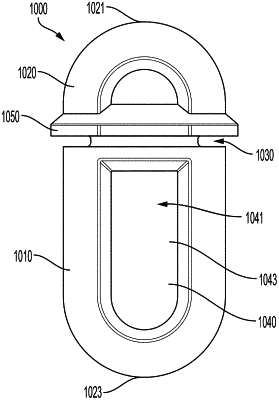| CPC A01K 15/025 (2013.01) | 20 Claims |

|
1. An animal interaction device comprising:
a base portion defining a first end of the animal interaction device, wherein the base portion comprises a stop comprising a stop surface, a plurality of indentations extending into the stop surface, and a plurality of protrusions extending from the stop surface, wherein a width of the base portion is less than a width of the stop, wherein the plurality of indentations comprises at least one first indentation extending at least partially along a first line and at least one second indentation extending at least partially along a second line, and wherein the second line is at an oblique angle relative to the first line;
an animal engagement portion defining a second end of the animal interaction device; and
a support portion extending between the stop and the animal engagement portion;
wherein at least the stop surface and the animal engagement portion are configured to selectively lock the animal interaction device into a mesh network;
wherein the stop surface extends perpendicular to a longitudinal axis of the animal interaction device and forms a rim extending around a perimeter of a first end of the support portion; and
wherein the longitudinal axis extends from the first end to the second end.
|